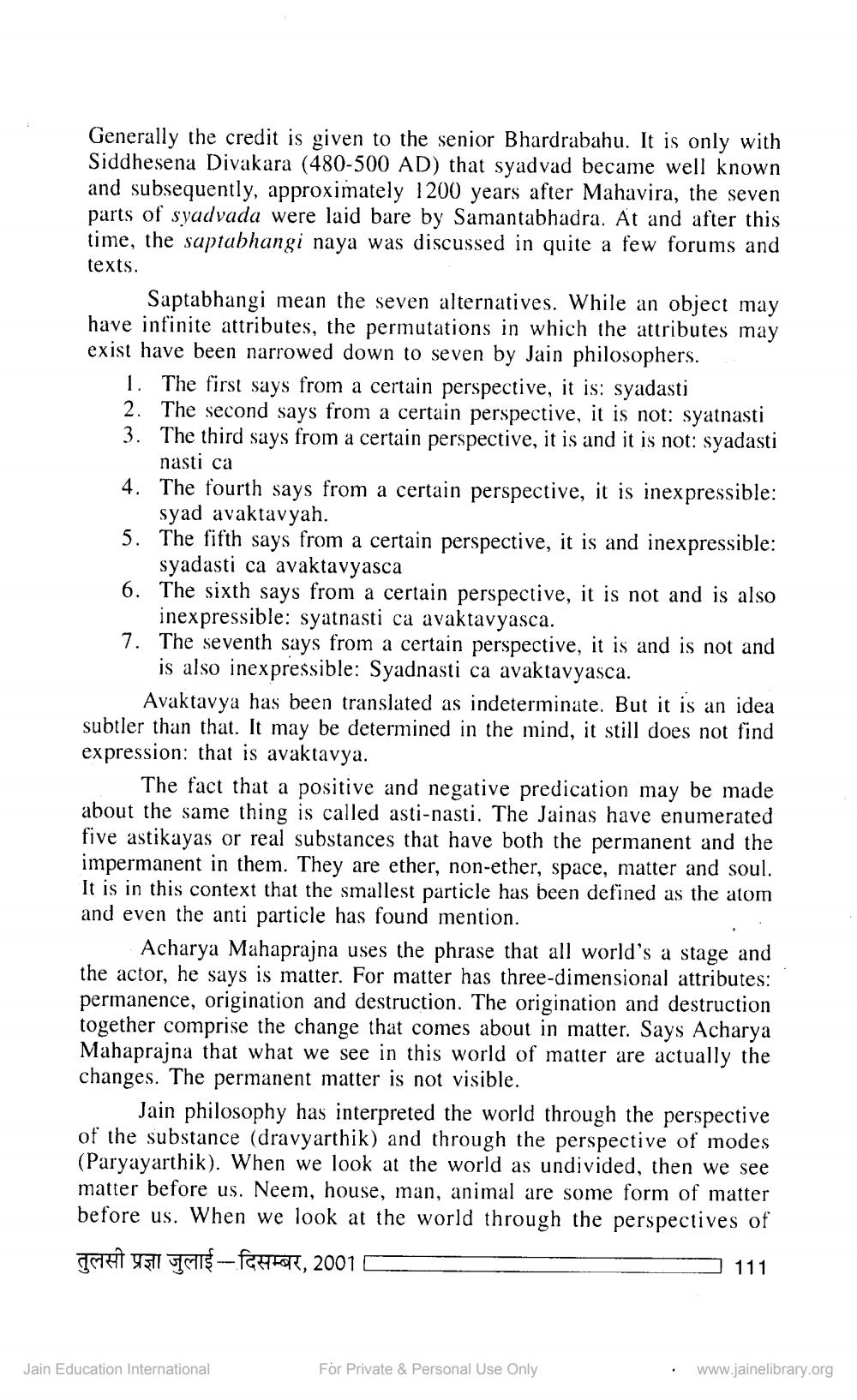________________
Generally the credit is given to the senior Bhardrabahu. It is only with Siddhesena Divakara (480-500 AD) that syadvad became well known and subsequently, approximately 1200 years after Mahavira, the seven parts of syadvada were laid bare by Samantabhadra. At and after this time, the saptabhangi naya was discussed in quite a few forums and texts.
Saptabhangi mean the seven alternatives. While an object may have infinite attributes, the permutations in which the attributes may exist have been narrowed down to seven by Jain philosophers.
1. The first says from a certain perspective, it is: syadasti 2. The second says from a certain perspective, it is not: syatnasti 3. The third says from a certain perspective, it is and it is not: syadasti
nasti ca 4. The fourth says from a certain perspective, it is inexpressible:
syad avaktavyah. 5. The fifth says from a certain perspective, it is and inexpressible:
syadasti ca avaktavyasca 6. The sixth says from a certain perspective, it is not and is also
inexpressible: syatnasti ca avaktavyasca. 7. The seventh says from a certain perspective, it is and is not and
is also inexpressible: Syadnasti ca avaktavyasca.
Avaktavya has been translated as indeterminate. But it is an idea subtler than that. It may be determined in the mind, it still does not find expression: that is avaktavya.
The fact that a positive and negative predication may be made about the same thing is called asti-nasti. The Jainas have enumerated five astikayas or real substances that have both the permanent and the impermanent in them. They are ether, non-ether, space, matter and soul. It is in this context that the smallest particle has been defined as the atom and even the anti particle has found mention.
Acharya Mahaprajna uses the phrase that all world's a stage and the actor, he says is matter. For matter has three-dimensional attributes: permanence, origination and destruction. The origination and destruction together comprise the change that comes about in matter. Says Acharya Mahaprajna that what we see in this world of matter are actually the changes. The permanent matter is not visible.
Jain philosophy has interpreted the world through the perspective of the substance (dravyarthik) and through the perspective of modes (Paryayarthik). When we look at the world as undivided, then we see matter before us. Neem, house, man, animal are some form of matter before us. When we look at the world through the perspectives of THAT Y511 Tails - futsal, 2001
111
Jain Education International
For Private & Personal Use Only
www.jainelibrary.org




